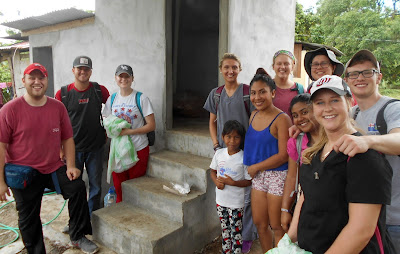Close of Service Movie
After every Peace Corps service, it is my tradition to make
a short “highlight reel” of my time in-country. After watching it, I realize
how very superficial it is. It’s just the headlines of events of my service.
And, as we know, most of the real living of life is done between the headlines.
So it is with me. Some events which touched me deeply – like
the whole Jaqui / Elsa incident or sharing cookies with Sarita or just being in
love with nature and life while waiting for the bus or the many bus
conversations – didn’t even make the cut.
Sometimes it seems to us volunteers that Peace Corps only
cares about the headlines – the projects completed and number of people
affected. The truth is that much of what we do is not quantifiable or
measurable. Nor may the results even be known for many years. The Peace Corps
volunteer who told Lydia that she could drive a bus if she wanted to, had no
idea of the remarkable outcome of that statement and example.
I ‘ve spent the last week visiting all the villages and
people that I’ve served in the Torti and Darien areas to say Good-Bye and give
my little photo gifts. I don’t know how it happens so quickly, but I’ve grown
quite fond of and attached to many of these wonderful folks. Maybe it’s an
attitude of open-ness and willingness to make new connections. In any case, all
the small moments with them – like getting to Curti early, so I can have morning
coffee and cookies with dear Leo and play with his puppy while we chat – come flooding
back in a surge of emotion.
While I’m proud of the headlines, the good I’ve done and the
friends I have helped here in Panama, it is those small moments that are the
most precious to me. I can always go back and watch the Highlight Reel, but
those small special moments and times are the ones I’ll keep safe in my heart.
Since “Bimbo” has no brothers or sisters to play with, his
Mom fills that role very nicely. I love to watch these two roll on the grass
and play/fight. It makes me a little sad that most dogs in the US and elsewhere
will never know to joy of romping with their real doggie families.
I thought I might have a mouse who’d been eating my bananas.
Turns out it was a bat. Actually three bats ( mice with wings) took turns
attacking the single banana – very courteous, these bats.




















